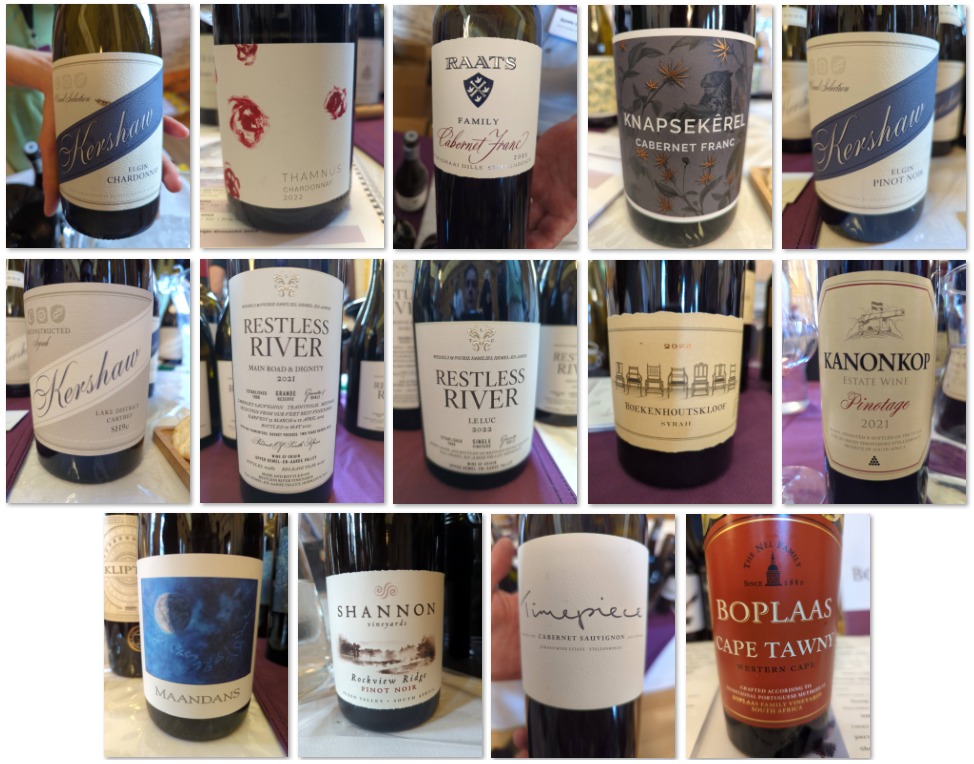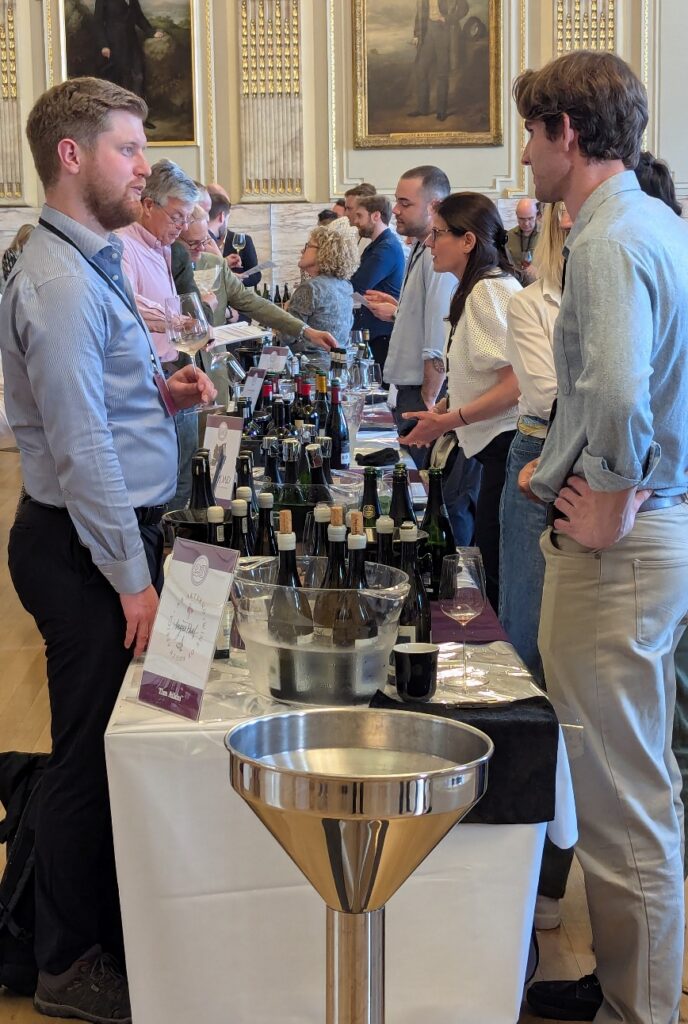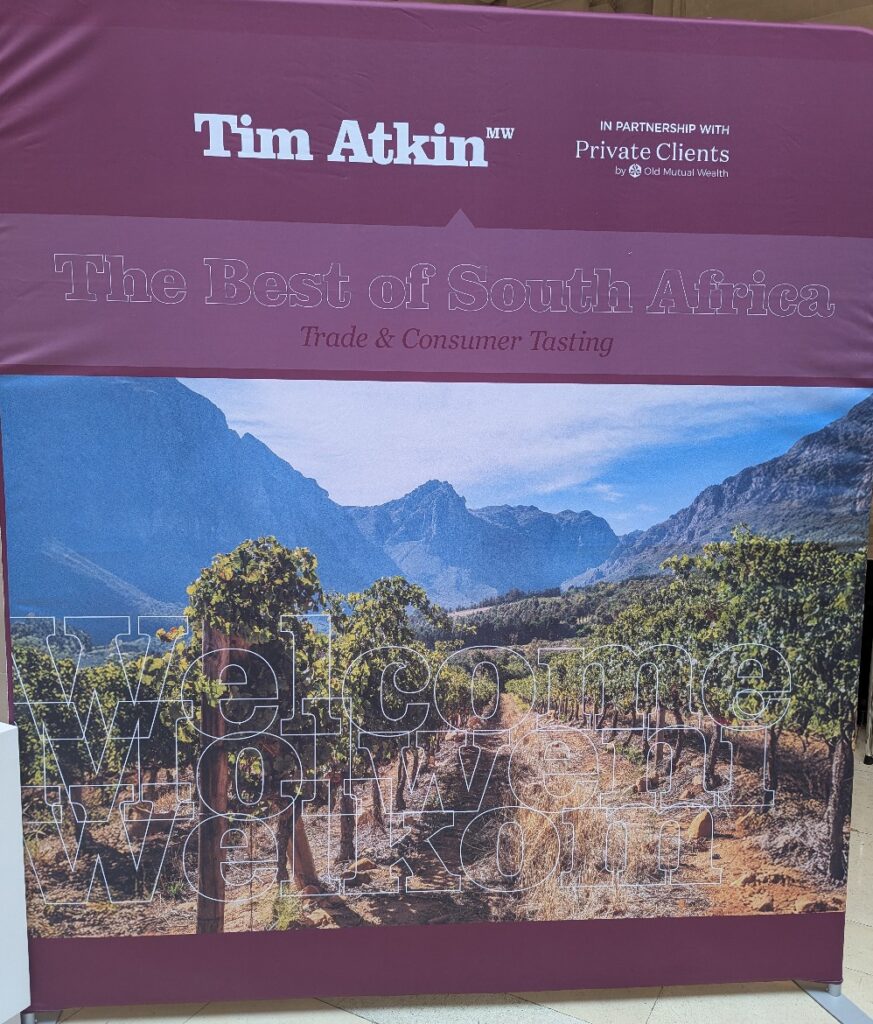
In mid-May 2025, I attended the Tim Atkin MW The Best of South Africa Tasting, an event Tim described as likely the finest presentation of South African wines in the UK this year. That claim stood up, the range and calibre of wines on show were outstanding.
Tim Atkin MW is known for producing an annual South Africa Special Report, where he highlights standout producers and wines from the country. This tasting was based on his 2024 report and brought together a carefully curated selection of producers chosen by invitation only. Alongside these were producers identified as ‘Rising Stars’, a category Tim uses to spotlight emerging talent. Many of the winemakers were there in person, offering their wines and sharing insight.
The event featured a remarkable line-up of producers, including names such as Angus Paul, Badenhorst, Benguela Cove, Blank Bottle, Boekenhoutskloof, Capensis, David & Nadia, Delaire Graff, Glenelly, Graham Beck, Iona, Kanonkop, Keermont, Kershaw, Lismore, Meerlust, Mullineux, Newton Johnson, Raats, Rall, Restless River, Savage, Sijnn, Storm, Thorne & Daughters, Tokara, Vergelegen, Waterford, and many more. The list ran to over 60 producers and more than 300 wines. It was impossible to try them all, let alone capture everything worthy of attention. Still, several stood out and left a lasting impression:

Kershaw’s Clonal Selection Chardonnay 2022 from Elgin (13.5%, £44) offered a smokey aroma followed by ripe apricot, subtle oak influence and crisp acidity. The balance was spot on, with everything in harmony. It’s imported by Hallgarten & Novum and is widely available.
Thamnus Chardonnay 2022 (13.5%, £45) from Overberg is one of the wines by a rising star highlighted by Tim. From a cooler region, it showed a citrus aroma with slight salinity and hints of caramel and oak. It clearly had a French influence. Available from Museum Wines.
RAATS Cabernet Franc 2021 (13.5%, £36) from Polkadraai Hills in Stellenbosch had dark berry and black cherry aromas, with flavours leaning into dark fruit and savoury notes. It had refined tannins and an overall very elegant character. Imported by Alliance Wines.

Thistle and Weed’s Knapsêkerel Cabernet Franc 2023 (13.5%, £36) from Stellenbosch, farmed biodynamically, displayed rose and thyme aromatics with lively raspberry and cranberry on the palate. Tannins were gentle, and the wine had a delicate, fruity lift. Available from Graft Wines.
Kershaw’s Clonal Selection Pinot Noir 2022 (13.5%, £48) from Elgin showed floral character and layers of dark cherry, cassis and smoked meat. A savoury expression that lingered long. It’s available via Hallgarten & Novum.
Kershaw Clonal Deconstructed Lake District Cartref Sh9c Syrah 2021 (12.5%, £76). With blackberry on the nose and a distinct cranberry-earthy character, this was something very different. Available via Hallgarten & Novum.
Restless River’s Main Road & Dignity Cabernet Sauvignon 2021 (14%, £62), from the Upper Hemel-En-Aarde Valley, brought blackcurrant and redcurrant with gentle wood tones. The oak wasn’t overbearing, allowing the fruit to shine. Imported by Liberty Wines.
Restless River Le Luc Pinot Noir 2022 (13%, £49) was a highlight, floral and cherry aromas followed by concentrated strawberry and raspberry with a touch of savoury /reductive notes. Available through Liberty Wines.
Boekenhoutskloof Syrah 2022 (14%, £45) from Swartland was rich with black fruit and herbal spice on the nose and a full, spicy character with blackberry and roasted meat tones. Excellent texture. Available from New Generation Wines.
Kanonkop’s Pinotage 2021 (14.7%, £36) from Stellenbosch had bold aromatics of plums, blackberries, liquorice, vanilla and smoke. The taste delivered deep plum and cherry fruit with dark chocolate and spicy oak and very expressive. Imported by Seckford Agencies.
Longridge Ultra-Premium Maandans 2020 Pinotage (14.5%, £95). With aromas of red cherry and cranberry and a slightly herbal lift, it opened into plums and black cherries with a very deep richness mid-palate. The finest Pinotage I’ve ever had. Available via Museum Wines.
Shannon Rockview Ridge Pinot Noir 2021 (14.5%, £30) from Elgin had vibrant raspberry, strawberry and cherry fruit with a long, savoury, spicy finish. The fruit came through strongly again at the end. Imported by Matthew Clark.
Jordan Timepiece Cabernet Sauvignon 2022 (13.5%, £58) showed leather on the nose and a deep flavour profile with blueberry and dark chocolate. Rich and intense, with a long finish. Imported by ABS Wine Agencies.
Boplaas Cape Tawny NV (18%, £22), made from 90% Tinta Barocca and 10% Touriga Nacional. A Tawny Port from South Africa, not Portugal, it delivered smooth brandied fruits, roasted nuts, honey, caramel and toffee. Available from The Wine Society.
I left the tasting reflecting on the sheer quality of South African wine at the top end. There were many savoury Pinot Noirs and complex Chenin Blancs. A significant number of red blends sought to emulate French Bordeaux styles, and while they entertained, I found myself preferring the single varietals. There was relatively less in the way of sparkling Cap Classique, and not much Pinotage, but what little there was proved stunning. It’s a challenging grape to get right and has no ‘Old World’ reputation, which might explain its scarcity at the premium level, but it clearly can succeed. The Longridge Maandans was a fine example.
An outlier was Boplaas, using Iberian varieties to create wines that leaned towards fruit rather than heaviness. Also, their Cape Tawny showed that port can be made just as well outside Portugal. Their approach felt brave, successful and refreshingly different, a reminder that South Africa need not always look to France for inspiration. There is room for more experimentation.
The current Tim Atkin South Africa Special Report is out now and the next edition is already in the works, due to launch in Cape Town on 1 September 2025.














